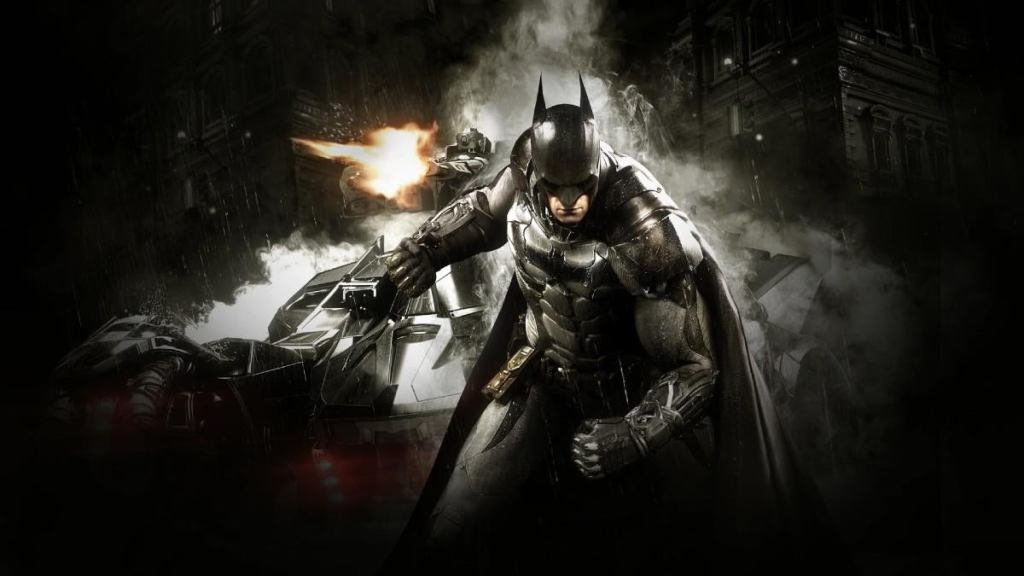For over eighty years, Batman has stalked the night to ensure that the people of Gotham can all sleep a little more safely and securely. In addition to striking fear into the hearts of criminals both great and small, the Caped Crusader has become a household name. Few superheroes are more recognizable than Batman. His early rise to pop-icon status was largely driven by the standalone story format, where individual tales were wrapped up within one or a few issues of a single comic book title. But that was then, and this is now. Today, Batman’s most compelling stories — the ones that keep him at the forefront of public attention — are no longer one-issue wonders.
Videos by ComicBook.com
Now, his best stories more often than not come from large-scale comic events that span multiple issues, may include several titles, and sometimes extend over months or even years of publication. While these events often yield compelling stories that garner critical acclaim, they also present significant challenges for both creators and fans.
The Dark Knight Returns and So Does Batman’s Popularity

While Batman had become a cultural icon by the 1980s – largely thanks to his longstanding Batman and Detective Comics comic book series – it wasn’t until Frank Miller’s The Dark Knight Returns, one of the Caped Crusader’s first major comic book event storylines, that returned him to his roots as a darker, grittier, and more ruthless vigilante. Fandom loved the change, making Miller’s graphic novel a game-changer in how Batman was perceived and setting him up to become one of the most compelling and enduring heroes of contemporary times.
[ RELATED: 39 Years Later, This Batman Comic Is One of the Most Influential of All Time ]
However, while Batman’s return to his darker iteration had been explored in his regular ongoing comic book series, it was the special events that truly cemented his reputation as a gritty, brooding superhero detective. Landmark stories like Frank Miller and David Mazzucchelli’s Batman: Year One and Jim Starlin and Jim Aparo’s Batman: A Death in the Family — somber tales that reinforced the idea of Batman as one of the most serious heroes in comics — are widely regarded as the most influential in shaping this enduring legacy.
Major events undeniably cemented Batman’s identity as the Dark Knight in the public’s mind. Yet, within the pages of his ongoing comic series, Batman and Detective Comics, creators largely adhered to their established formula of one-issue or limited 2-4 issue story conclusions. This traditional approach, however, eventually gave way to the growing trend of event storytelling. A prime example is Alan Moore and Brian Bolland’s The Killing Joke. Despite being a self-contained, single-issue narrative — and one of Batman’s most acclaimed stories — it was released not within a regular comic title, but as a standalone graphic novel event.
The Joys and Sorrows of The Batman Comic Book Event

While it’s clear that the event has been a boon for Batman by bringing his story in concentrated bits of delight to the masses, it also has its problems. For one, it limits the creators’ ability to focus on Batman as an individual. This occurs when creators are forced to come up with grand plots, dazzling twists, and bombastic conclusions that are a necessary element of an event, especially for the more spectacular ones like DC’s magnum opus Batman event, the epic 10-month Knightfall saga.
As a result, creators are not given the opportunity to focus on the more plot-driven stories that give Batman depth by exploring his character’s mindset, detective skills, and relationships. This type of storytelling, after all, is one of the unique strengths of the comic book medium. Indeed, without the background and lore that Batman and Bruce Wayne have built up over the decades in smaller, shorter, and more personal narratives, it’s unlikely that anyone would be interested in his event-driven spectacles.
Relying on major events to tell Batman’s best stories can make it difficult for fans, especially newer ones—to fully appreciate the Caped Crusader at his best. Following a story from beginning to end is often a challenge, as events, particularly large-scale ones, tend to span multiple issues and crossover into several titles. Even if a fan manages to read every issue in an event, without extensive knowledge of the broader DC Comics Universe, they may still struggle to identify and understand all the plot’s implications. That is, they won’t be able to fully enjoy the story.
Will the Real Batman, Please Stand Up?

Last but not least, by turning Batman’s best stories into large-scale events, DC risks diluting the aura and appeal of one of the most iconic superheroes ever to emerge from comic book pages. These events often force Batman into collaborations where he must share the spotlight with other heroes, villains, or notable characters. As a result, there’s less room for the story to focus on him, and less opportunity for fans to engage with the unique traits and complexities that define his character. Furthermore, due to the fact that different creative teams usually oversee each event, Batman’s characterization can vary widely from event to event and from his regular monthly issues. Taken together, this leads to a fragmented and inconsistent vision of who Batman is and what he represents.
Events have undeniably been instrumental in making Batman the global icon he is today, contributing some of his most celebrated storylines. However, their potential overuse could ultimately damage the franchise by distancing it from the core elements that first made Batman a star. These foundational elements include more accessible and less complicated story arcs, which historically focused on detailing the rich legend and lore of the Batman.









